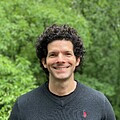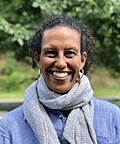This webinar explored how healthier building products can help to protect the health of vulnerable communities. The speakers addressed the sources of chemical exposures in the home, distinguishing between exposures from building products and those associated with other indoor activities, and the implications for protecting children’s health in the indoor environment. They also shared practical tools and resources for adopting safer solutions and helping architects, builders and developers move away from worst-in-class building products.
Robin Dodson, Sc.D. shared research on characterizing indoor chemical exposures. Exposures result from chemicals of health concern being released from building materials, furnishings, consumer product use, and other activities in the indoor environment. Identifying chemical sources can help inform intervention strategies to limit exposures. She shared research on disaggregating indoor chemical exposures that are associated with building materials and occupant behaviors. She also shared evidence-based strategies to limit exposures to common indoor pollutants like phthalates, flame retardants, and PFAS.
Roberto Valle, PhD presented Healthy Building Network's Informed, an assessment method used for materials modeling and product screening to guide healthy product selection at all stages of design. Many of the typical building products we use today contain harmful chemicals. The content of the vast majority of building products we use remains undisclosed, making it harder for architects and the general public to identify harmful products and safer alternatives. Informed is a materials modeling method that helps project teams make informed product decisions using a red-to-green color ranking system.
Veena Singla, PhD presented a case study of two widely-used insulation materials: fiberglass and spray polyurethane foam (SPF) insulation. Product manufacturers, policymakers, and professionals in the building industry are paying more attention to the potential health and environmental impacts of building products during installation and use, but there has been less consideration of the important chemical impacts, including contributions to environmental injustice or environmental racism, that may occur during other life cycle stages. She presented a framework based on the principles of green chemistry and the principles of environmental justice to expand understanding of products’ life cycle health and environmental justice impacts.
This webinar was introduced and moderated by Simone Early of the Massachusetts Bureau of Housing Development and Construction.
Featured Speakers
 Robin Dodson, ScD is Associate Director of Research Operations and Research Scientist at Silent Spring Institute, a nonprofit research organization that studies the link between the environment and women's health. She is an exposure scientist whose research focuses on the development of novel exposure measurements for epidemiological and community-based studies, analysis of environmental exposure data with a particular emphasis on semivolatile organic compounds, and intervention studies aimed at reducing chemical exposures. Robin completed her doctorate in environmental health at Harvard T.H. Chan School of Public Health. In addition to her appointment at Silent Spring, she is adjunct faculty at Boston University School of Public Health and a research associate at Harvard Chan.
Robin Dodson, ScD is Associate Director of Research Operations and Research Scientist at Silent Spring Institute, a nonprofit research organization that studies the link between the environment and women's health. She is an exposure scientist whose research focuses on the development of novel exposure measurements for epidemiological and community-based studies, analysis of environmental exposure data with a particular emphasis on semivolatile organic compounds, and intervention studies aimed at reducing chemical exposures. Robin completed her doctorate in environmental health at Harvard T.H. Chan School of Public Health. In addition to her appointment at Silent Spring, she is adjunct faculty at Boston University School of Public Health and a research associate at Harvard Chan.
 Roberto Valle Kinloch, PhD is HomeFree Manager at Healthy Building Network. He has over 12 years of experience working with local government, nonprofits, and the private sector delivering resource-efficiency solutions through an equity lens. Before joining HBN, Roberto led research and development efforts on sustainable building management practices in the U.K. and Norway. He spearheaded the implementation of a large-scale clean energy program in his home country of Nicaragua. Roberto holds an M.Sc. in Renewable Energy from the University of Reading in the UK and a PhD in Energy Management from the Norwegian University of Science and Technology in Norway.
Roberto Valle Kinloch, PhD is HomeFree Manager at Healthy Building Network. He has over 12 years of experience working with local government, nonprofits, and the private sector delivering resource-efficiency solutions through an equity lens. Before joining HBN, Roberto led research and development efforts on sustainable building management practices in the U.K. and Norway. He spearheaded the implementation of a large-scale clean energy program in his home country of Nicaragua. Roberto holds an M.Sc. in Renewable Energy from the University of Reading in the UK and a PhD in Energy Management from the Norwegian University of Science and Technology in Norway.
 Veena Singla, PhD is a Senior Scientist with the Natural Resources Defense Council and Adjunct Assistant professor at Columbia University. Her research investigates how toxic chemicals and pollution related to systems of materials use, production and disposal threaten the health of impacted communities. Veena serves on the US EPA's Children's Health Protection Advisory Committee, the National Toxicology Program Board of Scientific Counselors, the Board of Directors for Clean Production Action, and as Associate Director for the Agents of Change in Environmental Justice Program. Veena previously was the Associate Director of Science and Policy at the Program on Reproductive Health and the Environment at the University of California, San Francisco (UCSF). She completed a postdoctoral teaching fellowship at Stanford University and was an adjunct faculty member at the University of San Francisco. She holds a bachelor’s degree from the University of California, Berkeley, and a PhD in cell biology from UCSF.
Veena Singla, PhD is a Senior Scientist with the Natural Resources Defense Council and Adjunct Assistant professor at Columbia University. Her research investigates how toxic chemicals and pollution related to systems of materials use, production and disposal threaten the health of impacted communities. Veena serves on the US EPA's Children's Health Protection Advisory Committee, the National Toxicology Program Board of Scientific Counselors, the Board of Directors for Clean Production Action, and as Associate Director for the Agents of Change in Environmental Justice Program. Veena previously was the Associate Director of Science and Policy at the Program on Reproductive Health and the Environment at the University of California, San Francisco (UCSF). She completed a postdoctoral teaching fellowship at Stanford University and was an adjunct faculty member at the University of San Francisco. She holds a bachelor’s degree from the University of California, Berkeley, and a PhD in cell biology from UCSF.
 Simone Early is the Assistant Director of the Architecture, Engineering and Sustainability Unit in the Massachusetts Bureau of Housing Development and Construction (BHDC). Simone oversees a team of architects, engineers, and the sustainability developer who provide design oversight on the capital projects at 233 local housing authorities across the Commonwealth of Massachusetts. Her work includes providing design guidance for effective strategies for resilience to climate hazards, designing for healthy building environments, increasing energy efficiency and reduction of greenhouse gases, employing methods for aging in place, providing durable and safe housing, and developing creative community space. Simone is also a board member of the Mass Cultural Council, a state agency that promotes excellence, inclusion, education and diversity in the arts, humanities, and sciences to foster a rich cultural life for all Massachusetts residents and contributes to the vitality of our communities and economy. Through her work and volunteering, Simone is deeply invested in advancing environmental justice and equity for families and elderly with limited incomes.
Simone Early is the Assistant Director of the Architecture, Engineering and Sustainability Unit in the Massachusetts Bureau of Housing Development and Construction (BHDC). Simone oversees a team of architects, engineers, and the sustainability developer who provide design oversight on the capital projects at 233 local housing authorities across the Commonwealth of Massachusetts. Her work includes providing design guidance for effective strategies for resilience to climate hazards, designing for healthy building environments, increasing energy efficiency and reduction of greenhouse gases, employing methods for aging in place, providing durable and safe housing, and developing creative community space. Simone is also a board member of the Mass Cultural Council, a state agency that promotes excellence, inclusion, education and diversity in the arts, humanities, and sciences to foster a rich cultural life for all Massachusetts residents and contributes to the vitality of our communities and economy. Through her work and volunteering, Simone is deeply invested in advancing environmental justice and equity for families and elderly with limited incomes.
This webinar was the second in a three-part series exploring the disproportionate exposure of pregnant people, infants, children of color and other vulnerable populations to toxic chemicals and the ways in which choosing healthier building materials can protect vulnerable populations. This series was co-hosted by BlueGreen Alliance, the Collaborative for Health and Environment, the Program for Reproductive Health and the Environment, and Healthy Building Network, in partnership with Green Building Alliance, the Center for Environmental Health, and the Children's Environmental Health Network.
